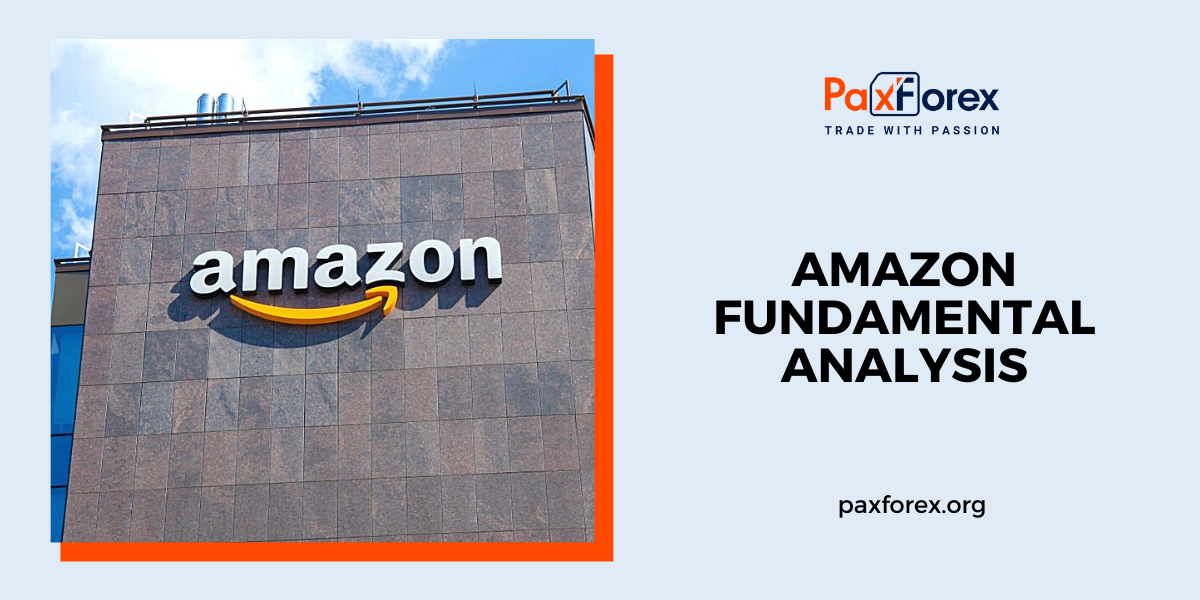
Source: PaxForex Premium Analytics Portal, Fundamental Insight
Amazon announced Wednesday night that its stock will be split 20-to-1, the first time it has split $3,000 worth of stock since September 1999! Simultaneously with the stock split announcement, Amazon also increased its share buyback program to $10 billion from the $5 billion it had before. On this announcement, Amazon stock soared nearly 7 percent in over-the-counter trading on Wednesday.
So should investors buy stock in anticipation of the split?
Amazon's decision has been a topic of discussion among investors ever since CEO Andy Jassy took the reins from founder Jeff Bezos last summer, and more recently after FAANG competitor Alphabet announced a stock split in February.
Of course, stock splits don't increase or decrease the value of the company; they simply divide the stock into smaller chunks. But they make it easier to buy shares for small shareholders who may not have $3,000 to invest. The advent of brokerages offering fractional shares has alleviated this problem somewhat for small buyers, but many investors still hold brokerage accounts that do not offer fractional shares. Therefore, fractionalization may have some impact on stock liquidity and option activity.
Obviously, since the last split, Amazon stock has performed well. But when the stock soared above $3,000, it ran into obstacles, especially when compared to other prominent tech stocks that have been split over the past two years.
Could such low returns be due to the low liquidity of Amazon stock? It's hard to say, but it's possible that management feels some dissatisfaction from employees (many of whom are paid in Amazon stock) about the recent stock performance. Amazon has doubled the number of employees since the pandemic began and is in a global war for tech talent, so the stock lag could affect the company's ability to hire top engineers.
Over the past 20 months, the company's stock has underperformed the market and many other major tech companies. Alphabet, Apple, Tesla, and Nvidia have all split their stock at some point in the past 20 months, with Apple and Tesla splitting in August 2020, Nvidia in July 2021, and Alphabet only recently announcing its split, which has yet to take effect.
It's unclear whether this is the reason for their outperformance; investors are wary of e-commerce stocks amid economic recovery and rising inflation. But company executives seem to think that's at least part of the reason.
While many view Amazon as a runaway growth stock, investors should not underestimate the company's capital allocation skills. More than because of the split, investors should buy the stock because it seems cheap based on the sum of its parts, and the company's management seems to think the same. Amazon employs a lot of smart people.
The fact that Amazon is starting to actively buy back shares speaks volumes. Under Bezos, Amazon sought to spend as much money as possible to grow the company, so the fact that management is increasing its stock buybacks means that it considers its stock to be severely undervalued.
In addition, Amazon is coming off a massive two-year investment cycle after the COVID-19 drop, but now, as growth trends normalize, that cycle should shorten. Thus, free cash flow could rise sharply this year as Amazon spends less money building its fulfillment network, which has more than doubled since the pandemic began.
Amazon has bought back stock before, but very infrequently and in small quantities. The last buyback was in late 2011 or early 2012 after the stock had fallen about 25 percent. Roughly the same decline in the stock has occurred recently. Investors should have followed the company's management at the time, as Amazon stock rose strongly in late 2012 and in the years that followed.
Also, while most think of Amazon as an e-commerce company, I would say that its Amazon Web Services (AWS) cloud computing platform is a better reason to own the stock, and it may be worth more than all of Amazon's e-commerce operations, or even more than the entire market value of the company today.
Consider that last year, AWS revenue grew 37% to $62.2 billion and operating income grew about the same to $18.5 billion, but AWS revenue and operating income accelerated during the year as economic activity grew, with growth accelerating 40% in the fourth quarter.
Assuming 35% growth this year, AWS's operating profit would be $25 billion; after taxes, net income would be about $20 billion. With a market capitalization of $1.4 trillion, the entire Amazon company trades at about 70 times AWS's profit margin for 2022.
If AWS were a separate business, it could get a P/E ratio in that range. Thus, investors could get Amazon's e-commerce operations, which are probably also very valuable, for free.
According to the Securities and Exchange Commission, Amazon shareholders will vote on the stock split at the company's annual meeting in May, and the split itself should go into effect sometime in early June, depending on the outcome of the shareholder vote. Assuming that the split will be a catalyst for stock appreciation, management will have spent a significant portion of the $10 billion stock buyback before then.
After a disappointing year and a half, 2022 could be a much better year for Amazon shareholders.
As long as the price is above 2895.00, follow the recommendations below:
- Time frame: D1
- Recommendation: long position
- Entry point: 2937.00
- Take Profit 1: 3080.00
- Take Profit 2: 3275.00
Alternative scenario:
If the level of 2895.00 is broken-down, follow the recommendations below:
- Time frame: D1
- Recommendation: short position
- Entry point: 2895.00
- Take Profit 1: 2765.00
- Take Profit 2: 2670.00













